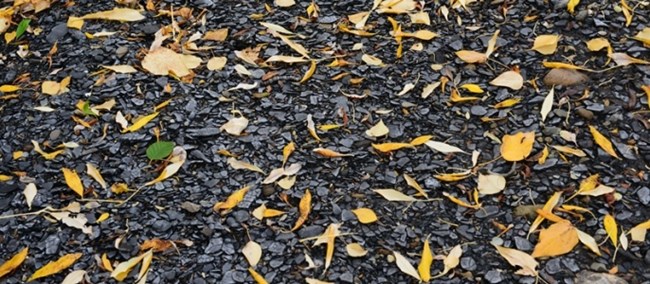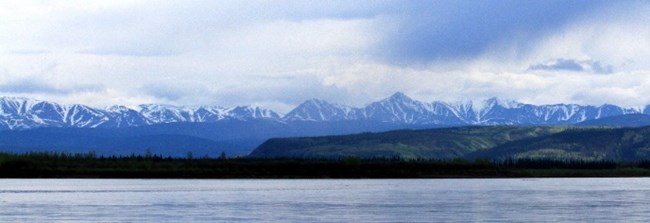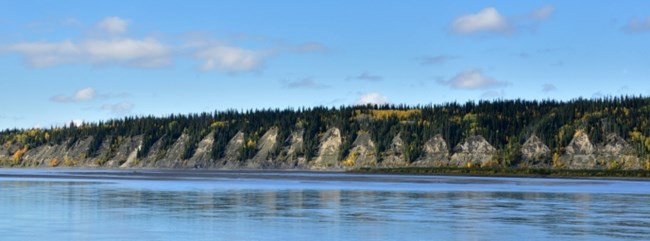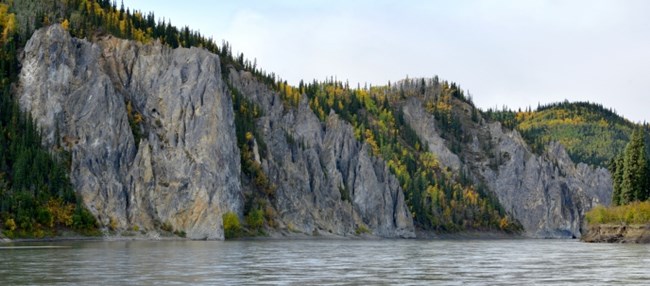
NPS Photo by Josh Spice 
NPS Photo by Josh Spice Graceful arches of Tahkandit Limestone flank the Yukon River on both banks just upriver of the mouth of the Nation River. These beige to very pale orange ridges form the north flank of the Michigan Creek Anticline. The Tahkandit Limestone, which tends to form massive cliffs, overlies the less resistant mudstone of the Nation River Formation. 
NPS Photo by Josh Spice Glenn Shale (Triassic - Cretaceous) is exposed along the Yukon near Glenn Creek, for which it is named. Glenn Shale is predominantly grayish-black carbonaceous shale. 
NPS Photo by Josh Spice 
NPS Photo by Josh Spice 
NPS Photo by Josh Spice 
NPS Photo by Josh Spice 
NPS Photo by Josh Spice 
NPS Photo by Josh Spice The needle-like spires of Takoma Bluff (Precambrian) suggest a medieval castle rising along the Yukon River. Swirling eddies allow the river traveler to examine the thinly layered limestone and dolomite. The needle-like features have developed through dissolution. During this process, water penetrates into vertical fractures and slowly dissolves the bedrock. |
Last updated: April 10, 2023
